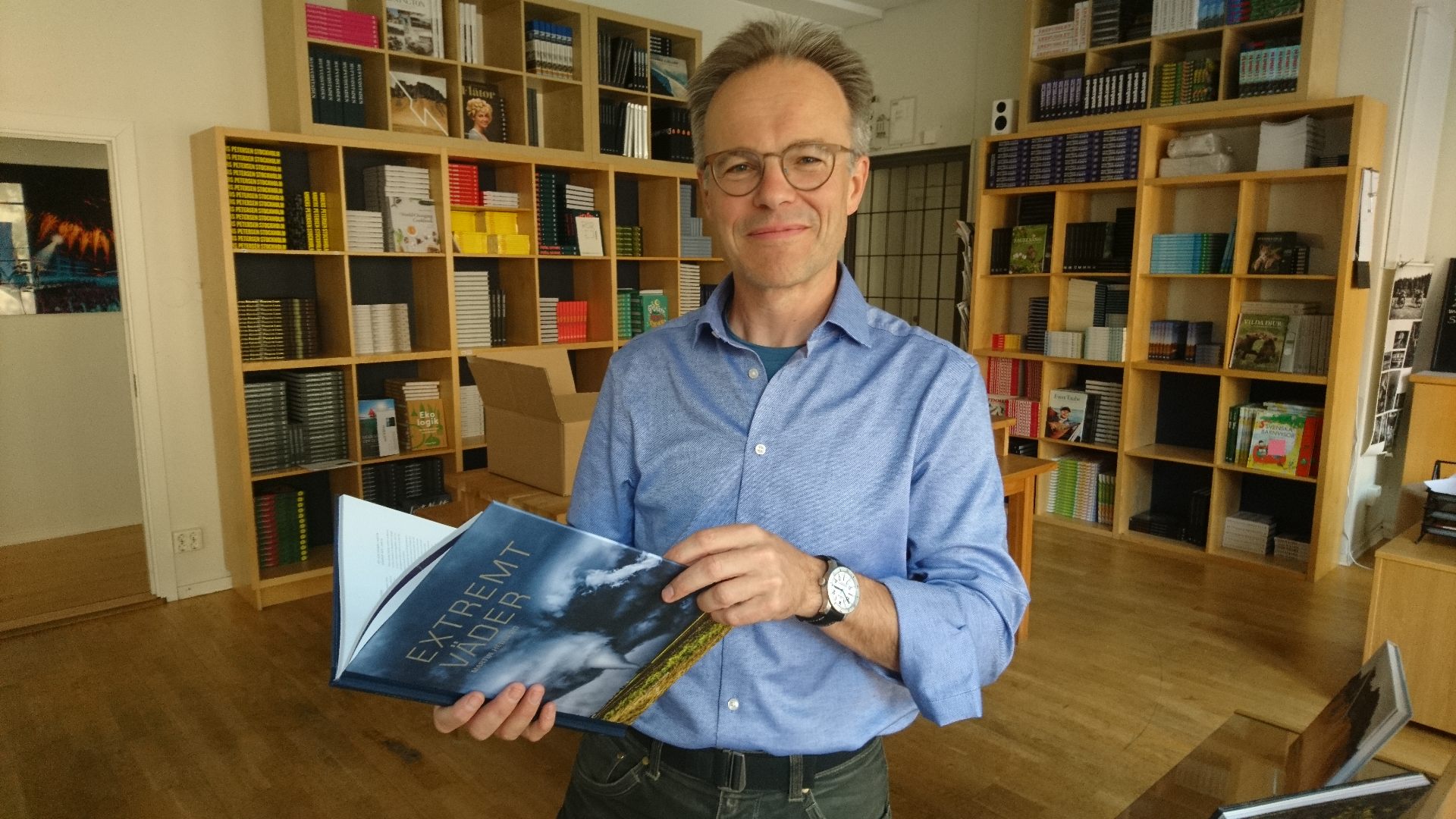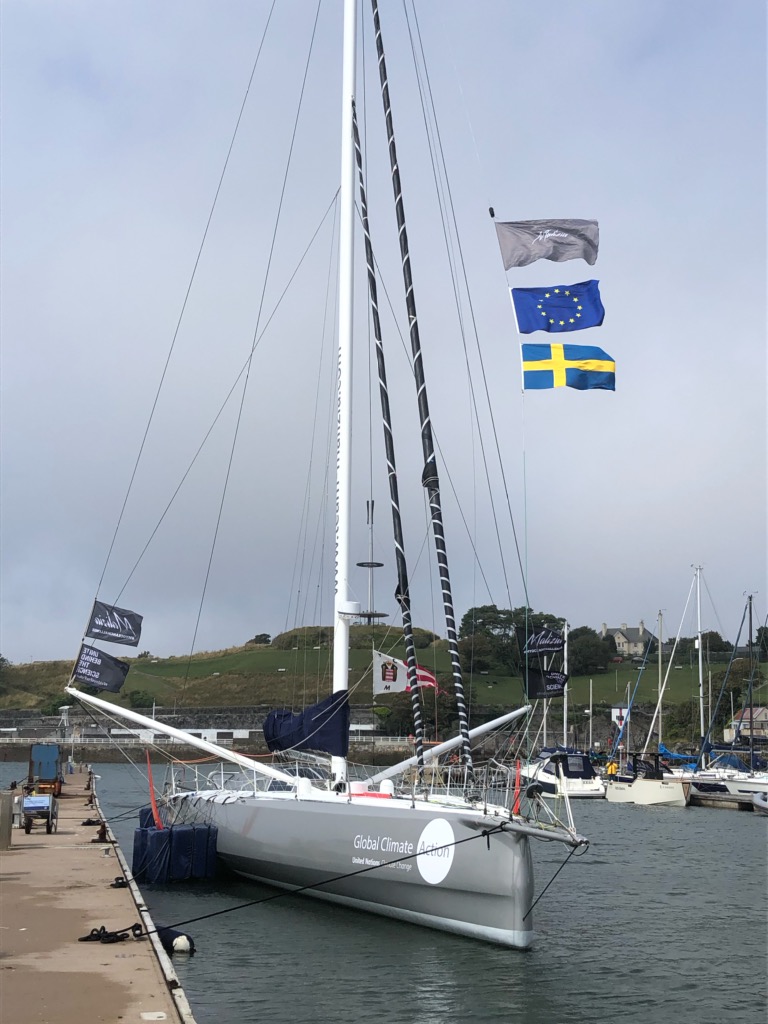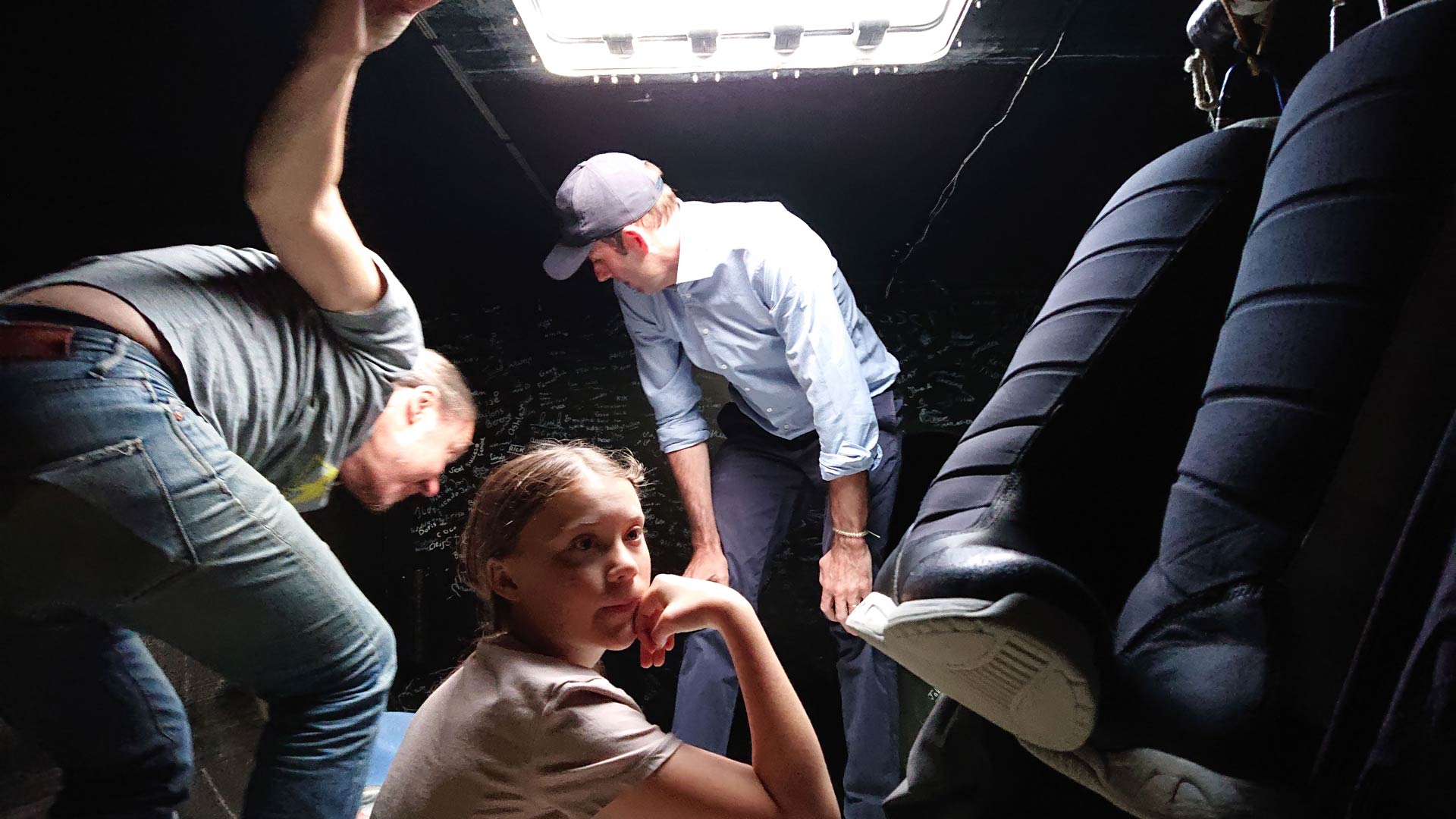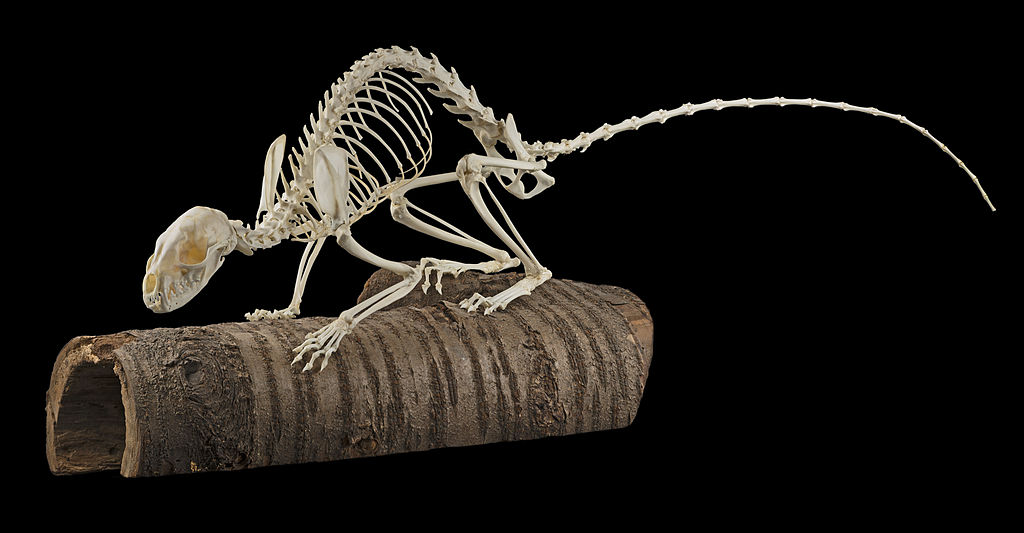Tidigare i veckan besökte jag förlaget Max Ström och fick äntligen hålla i ännu ett exemplar av min alldeles nytryckta bok Extremt väder. Det allra första exemplaret av boken fick jag för drygt två veckor sedan. Men det exemplaret gav jag bort. Den boken är nu på väg över Atlanten.
Så boken ni ser på bilden ovan är egentligen bok nummer två av mitt första alster som författare. Det en väldigt speciell känsla. Jag är glad och oerhört tacksam dels över att ha fått den här möjligheten, dels över att ha fått arbeta med en fantastisk redaktion. (Läs mer i en tidigare bloggartikel).
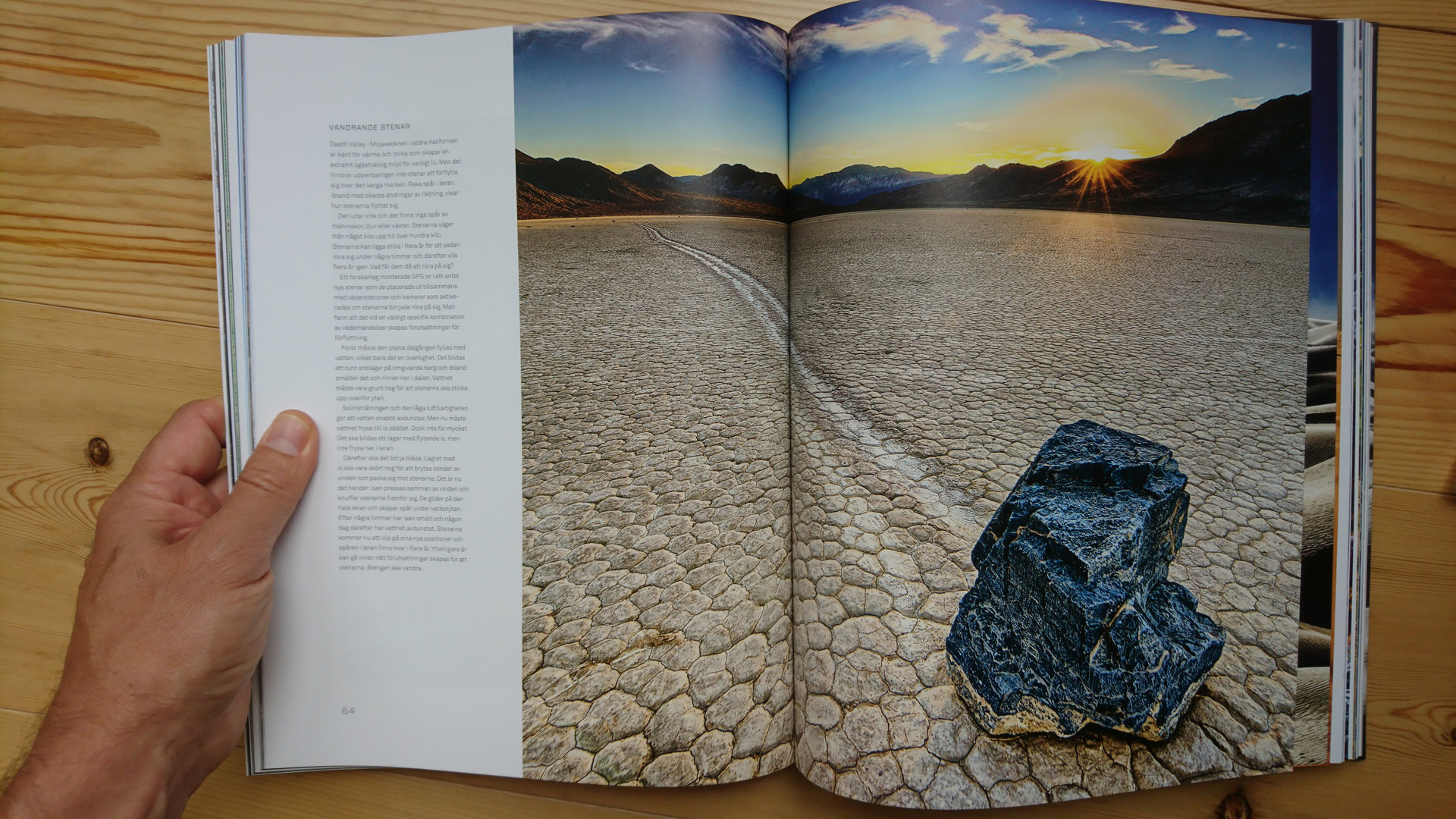
Boken kretsar kring fyra teman, vindar, temperatur, nederbörd och fenomen. Den bygger fantastiska bilder med lite längre bildtexter. (Nej inget av det jag fotograferat dög, och förläggaren Jeppe Wikström (som är fotograf) fick bara med en av sina egna bilder.)
Jag förklarar hur olika fenomen uppstår och beskriver hur människa och natur samverkar med väder och naturkatastrofer. Det är faktiskt lite mer än “bara” väder. Boken behandlar även jordskred, jättevågor, slukhål, norrsken, permafrost mm samt medicinska och ekosystemrelaterade aspekter av dessa. Där jag har lämnat min confort-zone har jag tagit hjälp av sakkunniga inom dessa (och mina egna) områden för att landa rätt.
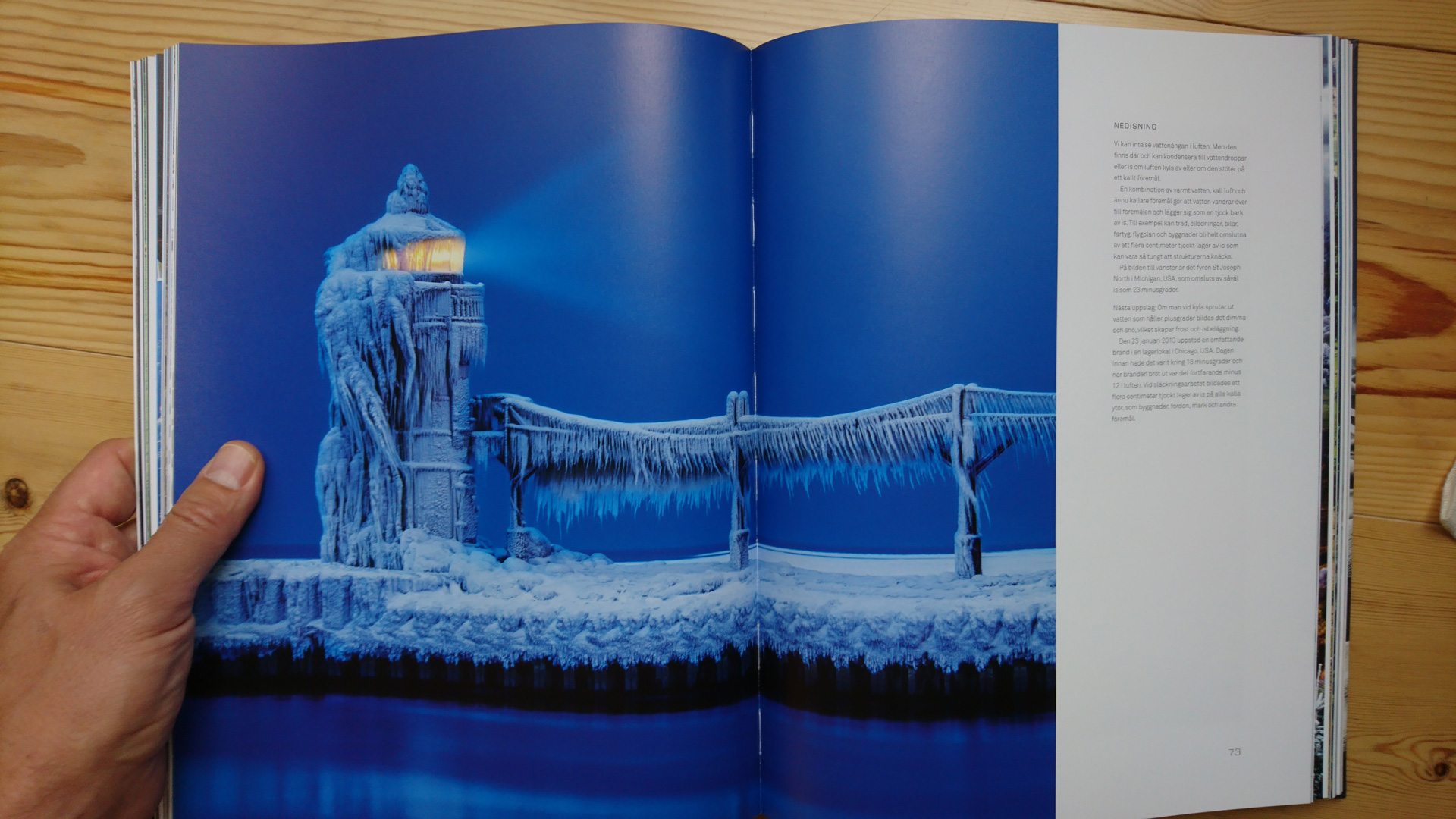
Med min profil kanske många tänker att boken mest handlar om hur klimatförändringar skapar extremt väder, men så är inte fallet. Förvisso sätter jag, där det behövs, in extremt väder och naturkatastrofer i perspektiv av att klimatet förändras. Det går inte att komma ifrån att vi människor är en del av vad vi kallar “Earth system”. Vad vi gjort märks i naturen.
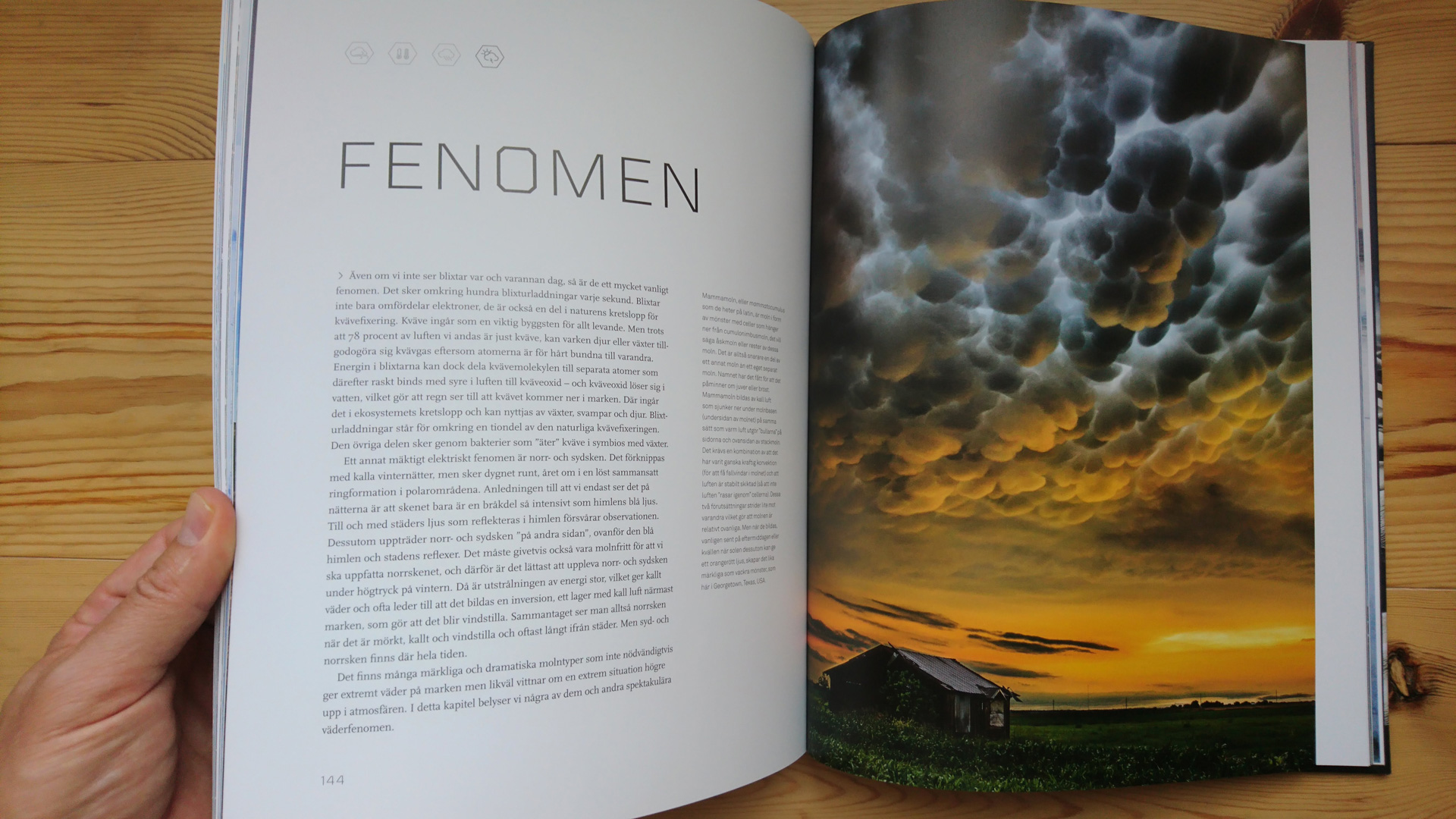
En orkan är fortfarande en orkan. Och vi har påverkat sannolikheterna för att den ska uppstå och hur mycket vindar och regn den kommer att ge. Och framför allt har vi förändrat förutsättningarna för allt övrigt liv på planeten, växter och djur. Det förändrar i sin tur förutsättningarna för oss. Förändringar av monsunregn till exempel. Eller havsnivåerna, permafrost som tinar, hav som försuras och skogar som skövlas. Allt är återkopplat, det är vansinnigt intressant och skrämmande.
Vi har också med ett uppslag av väderrekord. Kallast, varmast, torrast, högs/lägst lågtryck, tromber, blixtar, dödligaste naturkatastrofer, hagel, tropiska cykloner, isberg och annat för kalenderbitaren. Såväl globalt som, där det är relevant, i Sverige.
De avslutande två kapitlen, Framtidens väder och Epilog, är inte bildsatta. Efter man har läst de texterna får man sluta ögonen och skapa sig sina egna bilder. Där handlar det om sånt som ännu inte har skett. Men jag beskriver det i ord. Den stora frågan är hur människan och våra samhällen kommer att reagera. Lulla på som vanligt är inte en option. Naturen förändras och vi med den.
Jag har fått löfte om att boken skall att finnas i bokhandeln i slutet av nästa vecka (vecka 34).
/Martin
PS. Greta fick mitt första exemplar av boken. Boken kommer, när hon kommer fram till USA, att tillsammans med hennes övriga bibliotek hon har ombord på segelbåten Malizia II, doneras till Svenska ambassaden i USA. DS.
